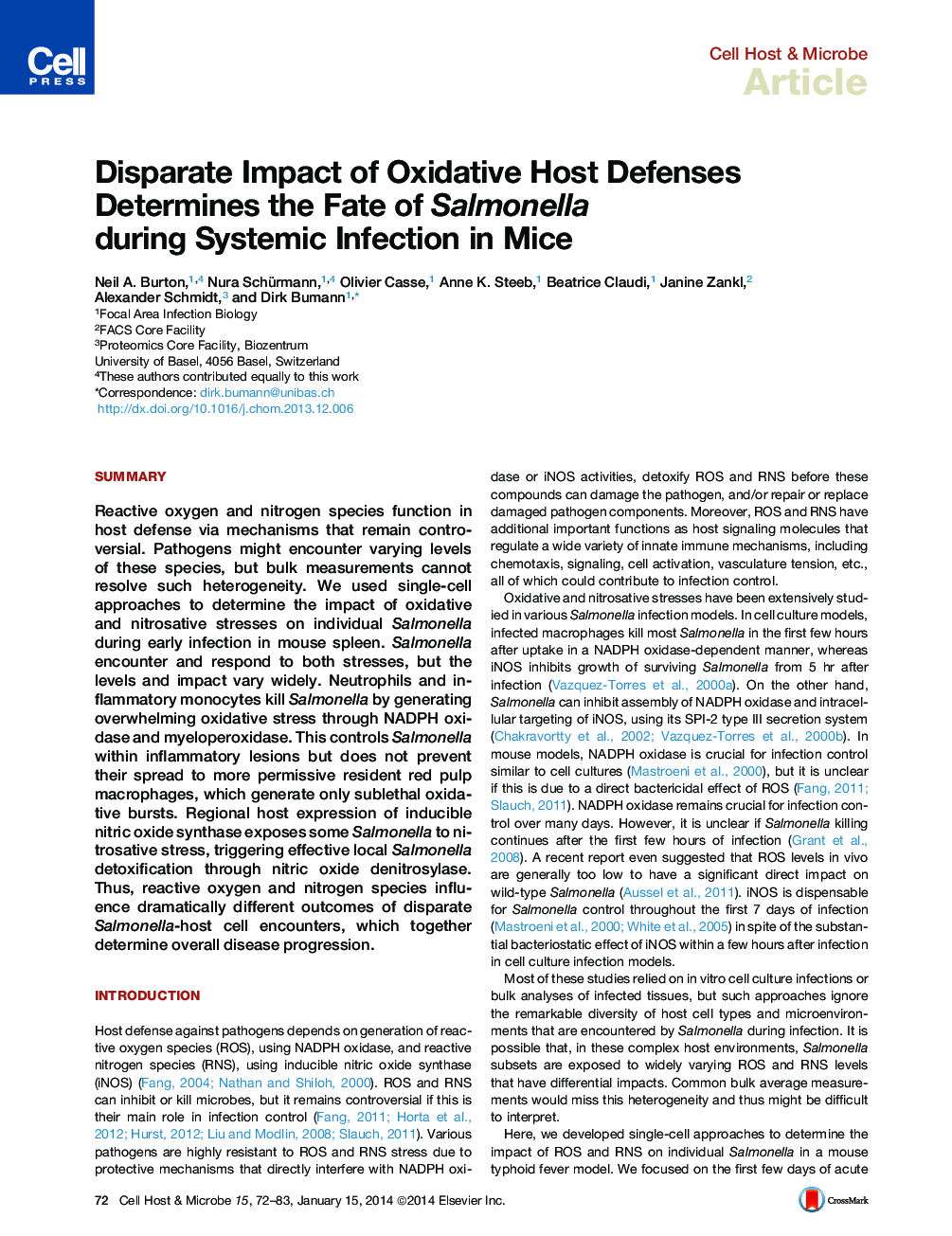| Article ID | Journal | Published Year | Pages | File Type |
|---|---|---|---|---|
| 4361123 | Cell Host & Microbe | 2014 | 12 Pages |
•Individual Salmonella experience varying oxidative and nitrosative stresses in vivo•Neutrophils and monocytes kill Salmonella with bactericidal oxidative stress•Sublethal oxidative bursts in resident red pulp macrophages allow Salmonella to spread•Regional nitrosative stress triggers an effective Salmonella detoxification mechanism
SummaryReactive oxygen and nitrogen species function in host defense via mechanisms that remain controversial. Pathogens might encounter varying levels of these species, but bulk measurements cannot resolve such heterogeneity. We used single-cell approaches to determine the impact of oxidative and nitrosative stresses on individual Salmonella during early infection in mouse spleen. Salmonella encounter and respond to both stresses, but the levels and impact vary widely. Neutrophils and inflammatory monocytes kill Salmonella by generating overwhelming oxidative stress through NADPH oxidase and myeloperoxidase. This controls Salmonella within inflammatory lesions but does not prevent their spread to more permissive resident red pulp macrophages, which generate only sublethal oxidative bursts. Regional host expression of inducible nitric oxide synthase exposes some Salmonella to nitrosative stress, triggering effective local Salmonella detoxification through nitric oxide denitrosylase. Thus, reactive oxygen and nitrogen species influence dramatically different outcomes of disparate Salmonella-host cell encounters, which together determine overall disease progression.
Graphical AbstractFigure optionsDownload full-size imageDownload high-quality image (168 K)Download as PowerPoint slide
